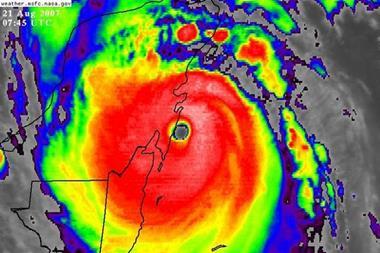Cancellation of Federal backstop could eliminate growth and availability of commercial terrorism coverage, says RMS
There remain critical issues to be addressed regarding the extension of the Terrorism Risk Insurance Act (TRIA), which is due to expire on December 31, 2007.
According to Risk Management Solutions (RMS), unless these discrepancies can be resolved policyholders and the industry could lose out on crucial benefits.
The RMS U.S. Probabilistic Terrorism Model has been used to help evaluate the impacts of modifying and extending TRIA. A RAND study showed that TRIA reduces taxpayer costs for attacks that cause losses of less than $40bn. Based on the RMS model, the likelihood of exceeding this amount in a given year is just 0.2%. The large deductibles ensure that TRIA provides coverage for only the most extreme events, said RMS.
Derek Blum, vice president of emerging risk models at RMS, commented: ‘Catastrophe risk modeling plays an important role in public policy by providing unique insight into the probability of major events like the occurrence of terrorist attacks and their potential financial impact. By having this crucial information, the Federal government can evaluate different options that will help the insurance industry create a market for terrorism risk coverage.’
RMS has taken a position on various elements still to be resolved in the bills:
The Senate has proposed a seven-year extension, while the House has pushed for fifteen years. RMS believes that an extension for seven years or more is appropriate.
“Catastrophe risk modeling plays an important role in public policy by providing unique insight into the probability of major events like the occurrence of terrorist attacks and their potential financial impact.
Derek Blum, vice president of emerging risk models at RMS
Coverage for CBRN Attacks - The House bill mandates that coverage for chemical, biological, radiological, or nuclear (CBRN) attacks should be made available. However, RMS believes an insurance market covering losses from CBRN attacks is unlikely to develop independently.
Annual Program Cap - Both the House and Senate have proposed a hard cap on the annual amount covered by TRIA. RMS thinks that hardening this cap will remove the ambiguity about how excess losses are covered and will encourage industry participation.
Domestic Terrorism - TRIA currently excludes losses from domestic terrorist attacks, which could create complications if the source of a terrorist attack cannot be clearly defined. The House and Senate would like to eliminate this exclusion going forward. RMS estimates that including domestic terrorism would only minimally increase the assumed risk while greatly simplifying the terms of TRIA coverage.
Group Life Insurance – RMS said terrorism is not one of the largest threats to life insurers, so it is not vital that TRIA provide coverage to this market.
RMS added that the growth and availability of terrorism coverage will only continue with assurance that the Federal government will support this process in the medium-term by guaranteeing TRIA for a number of years.
Blum concluded: ‘TRIA has provided protection to policyholders by ensuring a viable commercial insurance market for terrorism coverage. We have started to see a stand-alone market develop, which may signal the entrance of new capital into the industry. The economic impacts of TRIA are also evident in the strength of real estate development and commercial lending in higher-risk areas like New York and Chicago, as well as general availability of commercial terrorism insurance.’




















No comments yet